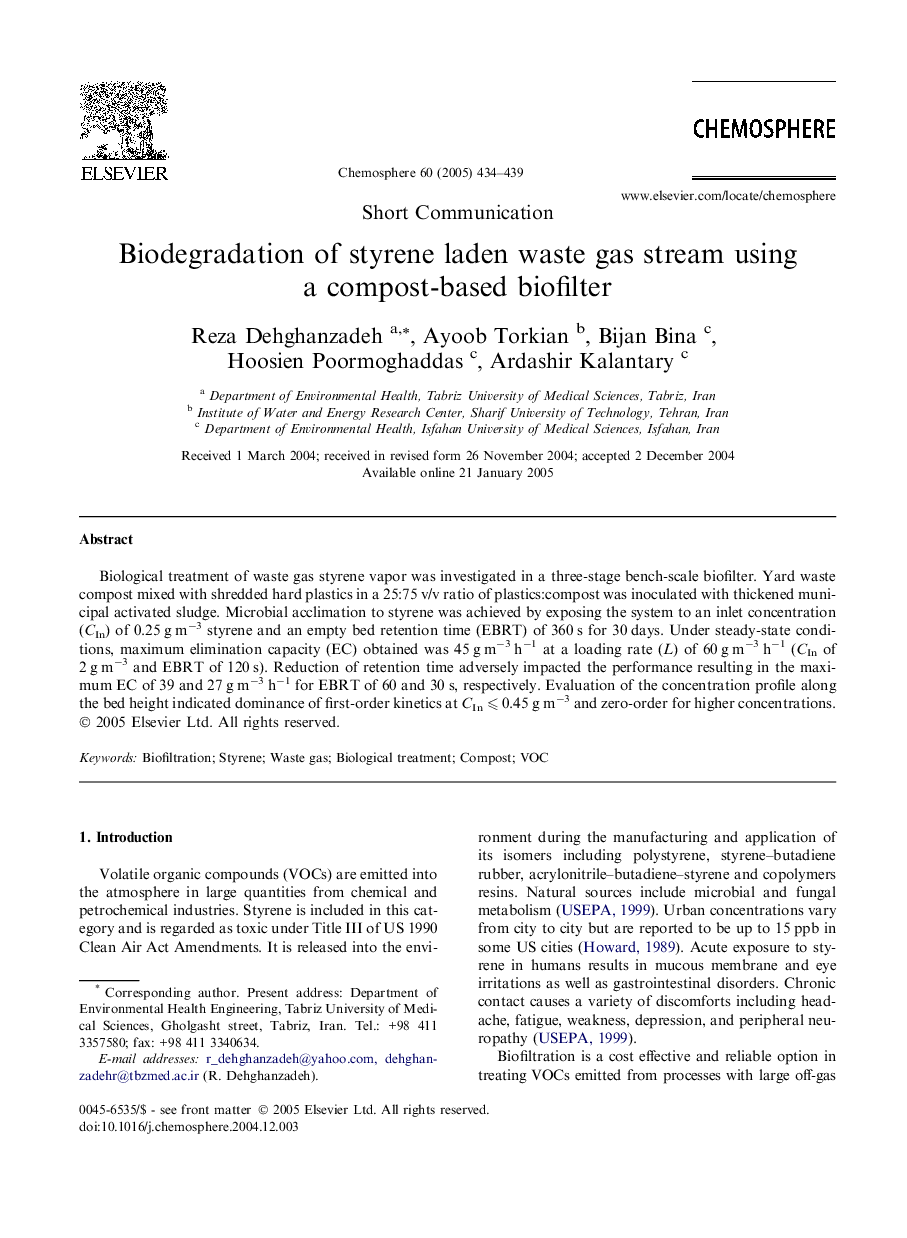| Article ID | Journal | Published Year | Pages | File Type |
|---|---|---|---|---|
| 9451537 | Chemosphere | 2005 | 6 Pages |
Abstract
Biological treatment of waste gas styrene vapor was investigated in a three-stage bench-scale biofilter. Yard waste compost mixed with shredded hard plastics in a 25:75 v/v ratio of plastics:compost was inoculated with thickened municipal activated sludge. Microbial acclimation to styrene was achieved by exposing the system to an inlet concentration (CIn) of 0.25 g mâ3 styrene and an empty bed retention time (EBRT) of 360 s for 30 days. Under steady-state conditions, maximum elimination capacity (EC) obtained was 45 g mâ3 hâ1 at a loading rate (L) of 60 g mâ3 hâ1 (CIn of 2 g mâ3 and EBRT of 120 s). Reduction of retention time adversely impacted the performance resulting in the maximum EC of 39 and 27 g mâ3 hâ1 for EBRT of 60 and 30 s, respectively. Evaluation of the concentration profile along the bed height indicated dominance of first-order kinetics at CIn ⩽ 0.45 g mâ3 and zero-order for higher concentrations.
Related Topics
Life Sciences
Environmental Science
Environmental Chemistry
Authors
Reza Dehghanzadeh, Ayoob Torkian, Bijan Bina, Hoosien Poormoghaddas, Ardashir Kalantary,
